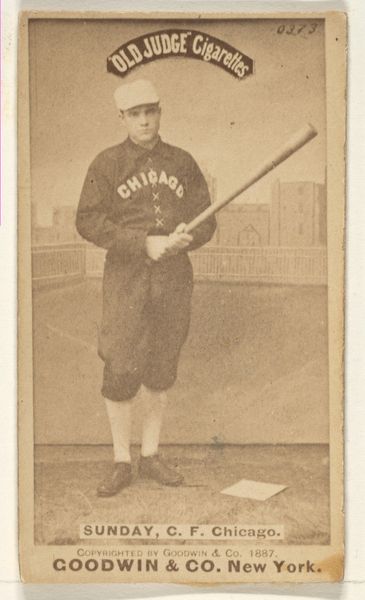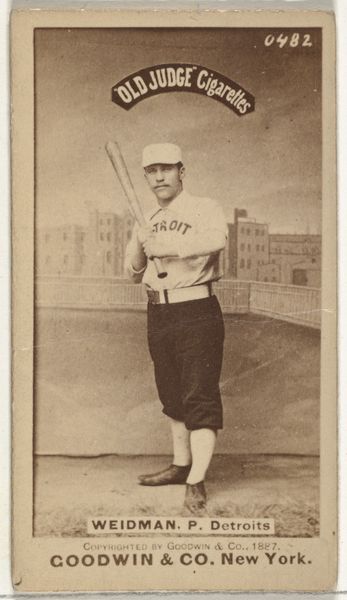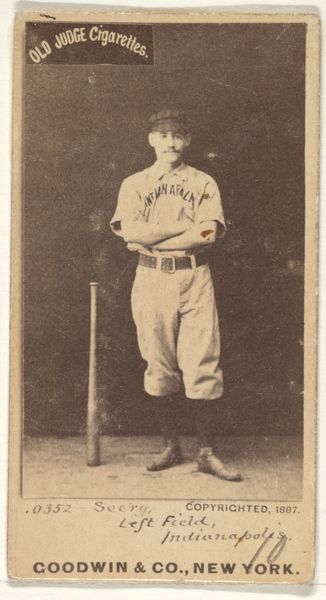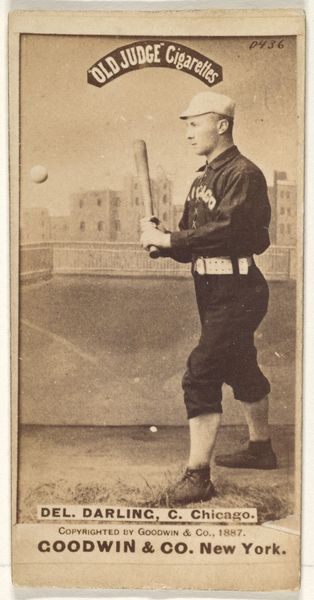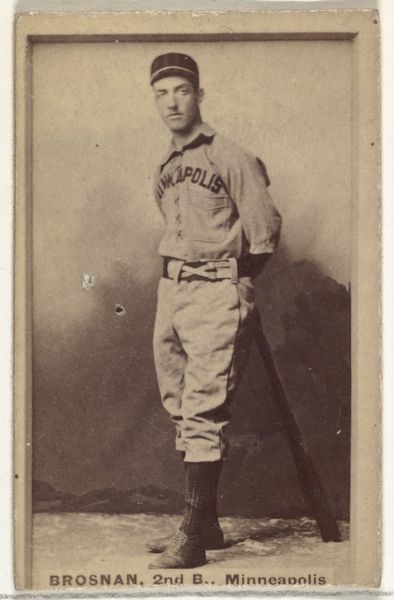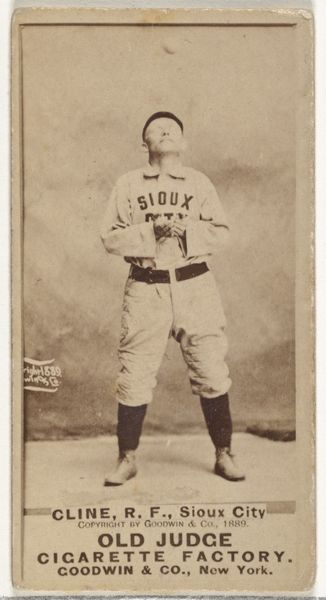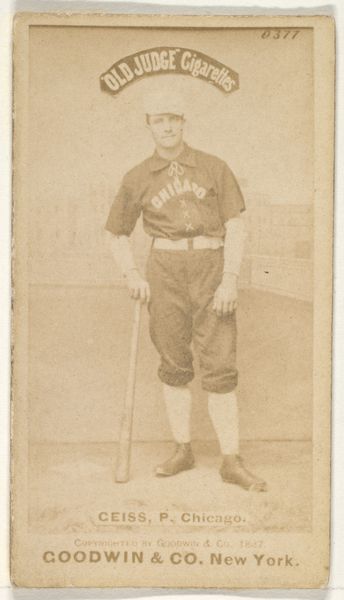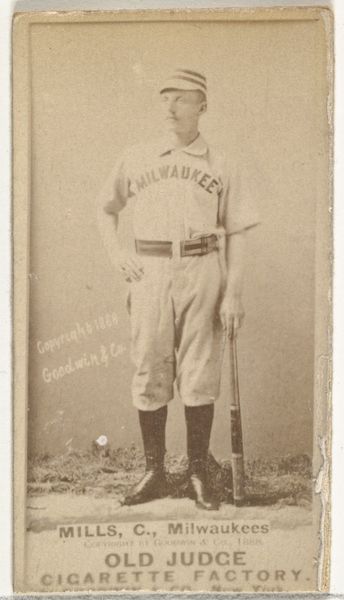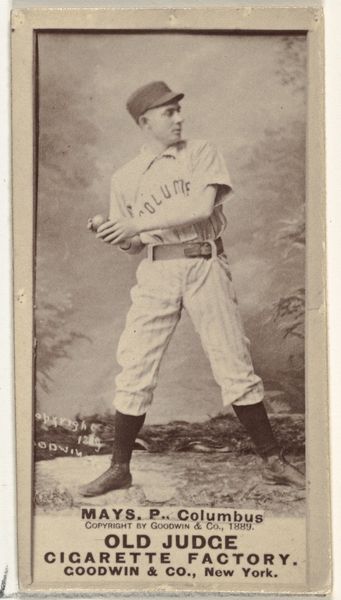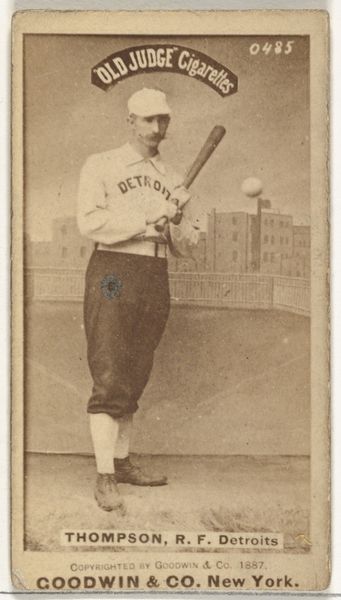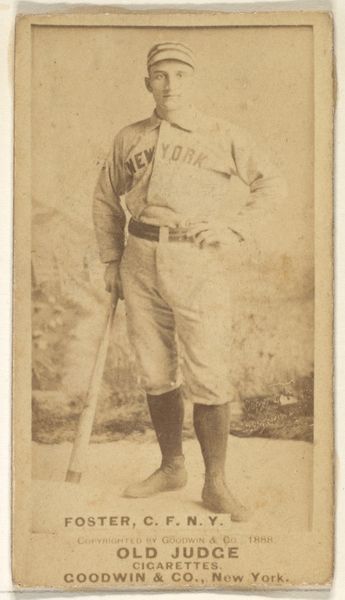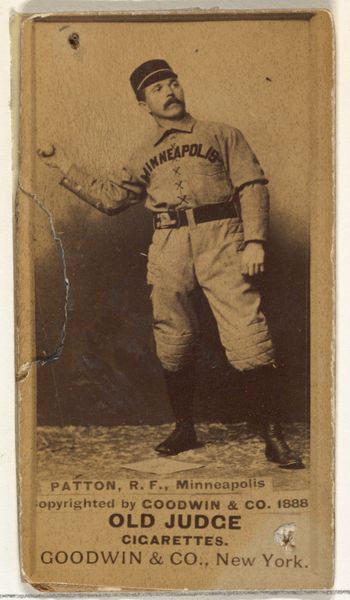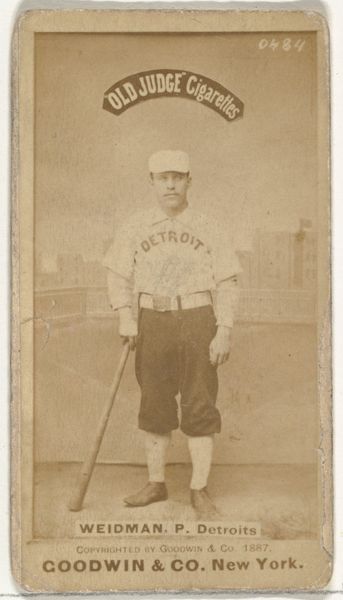
Sullivan, Left Field, Chicago, from the Old Judge series (N172) for Old Judge Cigarettes 1887
0:00
0:00
print, photography
#
portrait
#
aged paper
# print
#
baseball
#
photography
#
historical photography
#
19th century
#
men
#
genre-painting
Dimensions: sheet: 2 11/16 x 1 3/8 in. (6.9 x 3.5 cm)
Copyright: Public Domain
Curator: There's a certain nostalgic charm radiating from this Goodwin & Company print. Titled "Sullivan, Left Field, Chicago" it's from the Old Judge series, dating back to 1887. The sepia tones really place it in time. Editor: It evokes such a stark, almost haunting feel, doesn't it? He seems so serious, posed against this washed-out background of what I assume is a baseball field. The way the light catches his face... Curator: Well, this image originally functioned as a collectible baseball card, inserted into Old Judge Cigarettes packs. It speaks volumes about how deeply commercial interests permeated leisure and fandom, even back then. Editor: Absolutely. Think about the semiotics of tobacco being intertwined with America's pastime! Baseball as a potent symbol of American masculinity and the emergent culture of celebrity… even for a left fielder. His gaze holds a lot of cultural weight, I think. The team uniform itself has meaning. Curator: The fact that these cards are now in museum collections underscores the changing value of ephemera. What was once disposable advertising becomes a valuable historical document. I wonder, did the symbolism work to drive baseball and cigarette sales, or both? Editor: Indeed! It's not just about sport, but the performance of identity – for Sullivan, and for the consumer. These cards participated in myth-making. Baseball was becoming mythologized. The architecture and buildings faintly visible in the backdrop almost serve as backdrop, lending some sense of solidity, of context. Curator: The photograph’s patina serves as a reminder. Time’s effects aren’t simply the wear-and-tear on paper but are more deeply embedded in the way meanings morph and adapt over decades of social and commercial shifts. Editor: It reminds us that objects from the past offer layered reflections. Images gain emotional, cultural, and psychological meaning—connecting Sullivan, the viewer, and our ideas of American cultural identity into a kind of continuity.
Comments
No comments
Be the first to comment and join the conversation on the ultimate creative platform.
